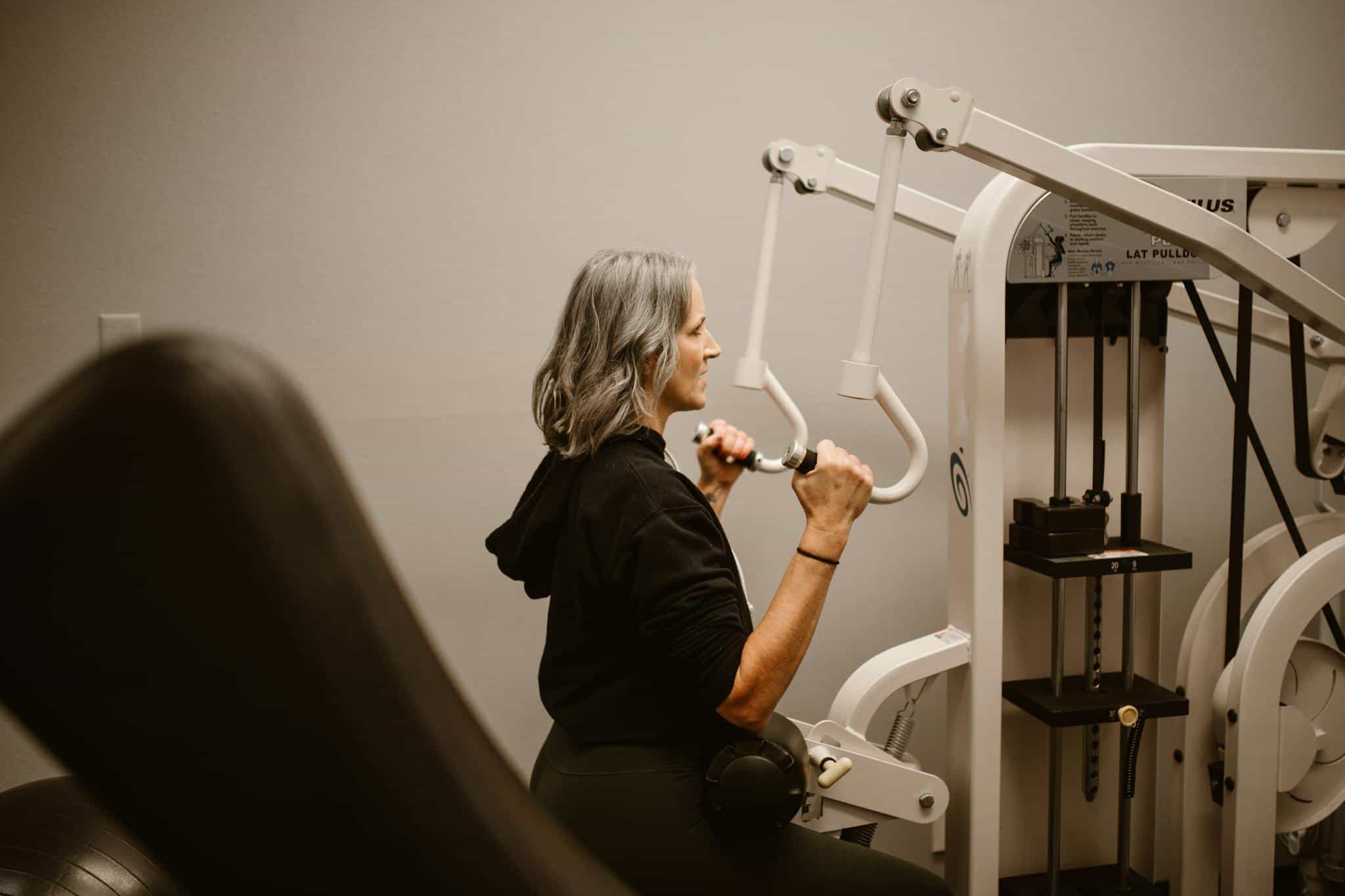Unstoppable at 40+: The Power of Strength Training for Women”

Your 40s can be a time of powerful transformation. It’s a decade where many women feel the desire to prioritize their health, strength, and confidence—but often don’t know where to start. One of the most effective and empowering practices you can add to your routine? Strength training.
Far from being just about lifting heavy weights, strength training is about building resilience—from your bones and muscles to your mindset. For women over 40, it’s one of the best investments in long-term health and vitality.
Disclaimer:
Before beginning any new exercise program, especially if you have existing medical conditions, injuries, or have not exercised in a long time, consult with your physician or a certified fitness professional. Everyone’s body is unique, and personalized guidance can help prevent injury and ensure a safe, effective workout.
1. Why Strength Training Matters More After 40
As we age, our bodies naturally lose muscle mass through a process called sarcopenia. Without resistance training, this loss can begin in your 30s and accelerate in your 40s and beyond. Less muscle mass means:
- A slower metabolism
- Increased risk of weight gain
- Reduced strength and stamina
- Greater vulnerability to falls or injuries
Strength training works to reverse or slow this process by stimulating muscle growth, improving bone density, and increasing energy levels.
2. Bone Health: A Hidden Superpower
Bone health is especially critical for women over 40. After menopause, estrogen levels drop, which accelerates bone loss and increases the risk of osteoporosis. Weight-bearing exercises, like squats, lunges, and deadlifts, signal your bones to grow stronger. This means fewer fractures, better posture, and more confidence in your movements.
3. Metabolism and Weight Management
Many women notice weight creeping up in their 40s—even if they haven’t changed their eating habits. Why? A decline in muscle mass leads to a slower metabolism. Strength training helps rev up your metabolism because muscle tissue burns more calories, even while you’re resting. This is a game-changer for sustainable weight management.
4. Everyday Strength and Confidence
Strength training isn’t just for the gym—it translates to real-life strength. Carrying groceries, moving furniture, or even keeping up with kids or grandkids becomes easier. Plus, there’s something incredibly empowering about feeling strong and capable in your own body.
5. Mental Health Benefits
Lifting weights can do wonders for your mind. Studies show that resistance training reduces symptoms of anxiety and depression, improves sleep, and boosts confidence. The act of pushing your physical limits also teaches mental resilience, helping you handle stress with more ease.
6. Myths That Hold Women Back
Let’s clear up some of the common myths:
- “I’ll get bulky.”
Women don’t have the same hormone profile as men, so strength training won’t make you bulky. Instead, you’ll see a leaner, more toned body. - “I’m too old to start.”
Strength training is beneficial at any age. Even women in their 70s can gain muscle and improve mobility. - “Cardio is enough.”
While cardio is great for heart health, it doesn’t maintain muscle mass or bone density the way resistance training does.
7. Beginner Strength Training Plan for Women Over 40
If you’re new to lifting, the key is to start slow, focus on form, and progress gradually. Below is a simple 3-day per week workout plan you can do at home or in the gym.
Day 1: Full Body Basics
- Bodyweight Squats – 3 sets of 12
- Wall Push-Ups – 3 sets of 8-10
- Glute Bridges – 3 sets of 12
- Standing Dumbbell Press (or water bottles) – 3 sets of 8-10
- Plank (knees or full) – Hold 15-30 seconds, 2 rounds
Day 2: Lower Body & Core
- Step-Ups (onto a low step) – 3 sets of 8 per leg
- Side-Lying Leg Lifts – 3 sets of 12 per side
- Hip Hinge (Romanian deadlift with light weights) – 3 sets of 10
- Seated Russian Twists – 2 sets of 10 per side
- Wall Sit – Hold 20-30 seconds, 2 rounds
Day 3: Upper Body & Stability
- Seated Overhead Dumbbell Press – 3 sets of 8-10
- Bent-Over Rows (light weights) – 3 sets of 8
- Bicep Curls – 3 sets of 10
- Modified Push-Ups (on knees) – 3 sets of 6-8
- Bird Dog – 3 sets of 6 per side
Tips for Success:
- Start with light resistance (even household items like water bottles or cans).
- Move slowly and focus on proper form.
- Rest 30-60 seconds between sets.
- As exercises get easier, add weight or reps gradually.
8. How to Avoid Injury and Stay Consistent
- Warm up for 5-10 minutes (walk or stretch).
- Focus on form over weight—good technique prevents injuries.
- If something feels painful (sharp pain, not muscle fatigue), stop immediately.
- Allow 1-2 days of rest between strength sessions for recovery.
9. Long-Term Health Investment
Strength training is not just about how you look—it’s about how you feel and live. More strength means better mobility, balance, and independence as you age. It’s an investment in your future self, allowing you to live life fully, without limitations.
Final Thoughts
Your 40s aren’t the time to slow down—they’re the time to get stronger. Strength training can transform your health, energy, and confidence. It doesn’t require hours at the gym—just consistency, the right plan, and the willingness to start.
